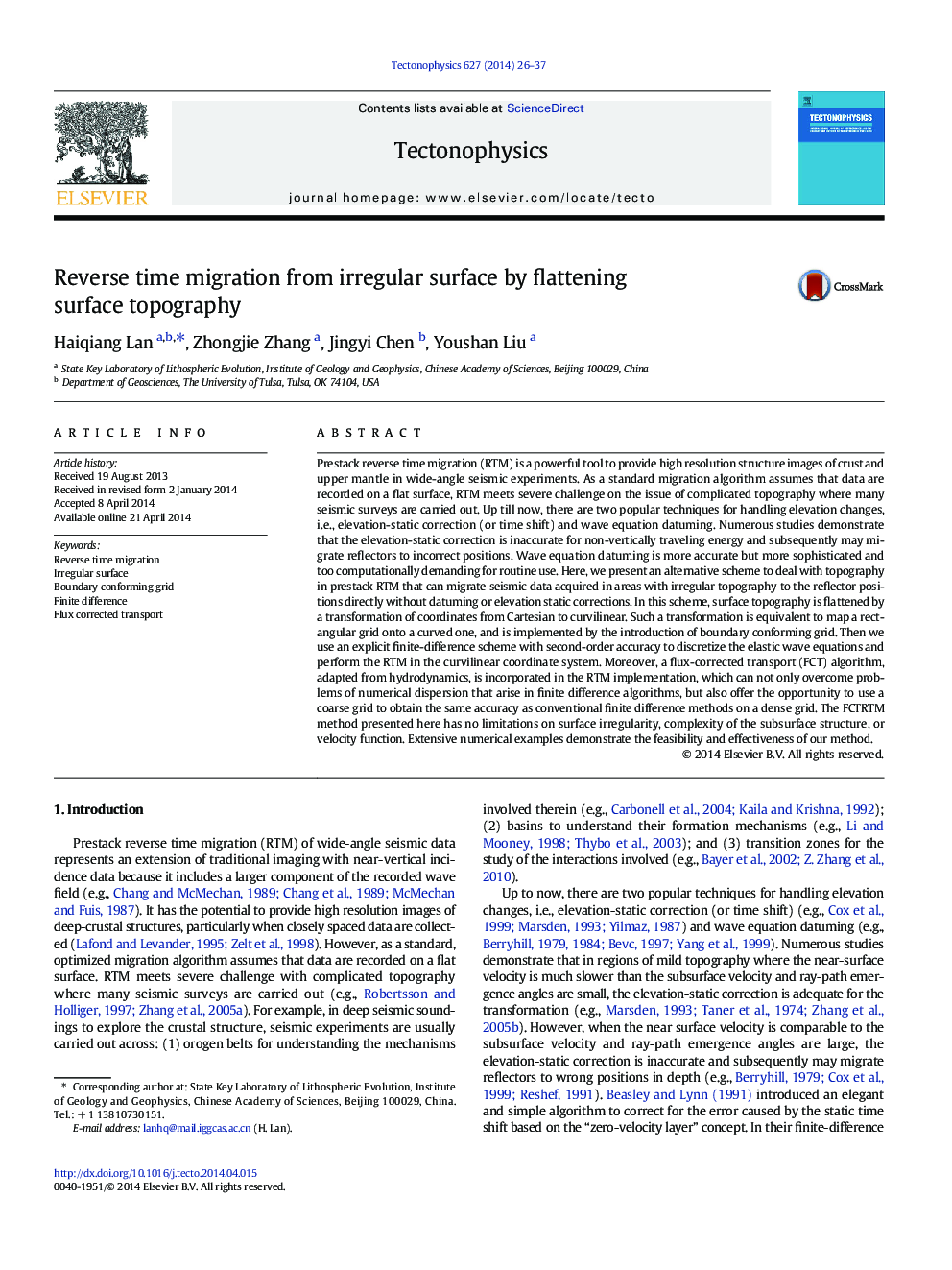| کد مقاله | کد نشریه | سال انتشار | مقاله انگلیسی | نسخه تمام متن |
|---|---|---|---|---|
| 4691960 | 1636764 | 2014 | 12 صفحه PDF | دانلود رایگان |
• Topography is flattened by a transformation from Cartesian to curvilinear.
• Incorporate flux-corrected transport (FCT) techque in reverse time migration.
• Perform reverse time migration from irregular surface directly.
• The FCT eliminates the numerical dispersions, improves the computational efficiency.
• Investigate the influence of source types on the reverse time migration.
Prestack reverse time migration (RTM) is a powerful tool to provide high resolution structure images of crust and upper mantle in wide-angle seismic experiments. As a standard migration algorithm assumes that data are recorded on a flat surface, RTM meets severe challenge on the issue of complicated topography where many seismic surveys are carried out. Up till now, there are two popular techniques for handling elevation changes, i.e., elevation-static correction (or time shift) and wave equation datuming. Numerous studies demonstrate that the elevation-static correction is inaccurate for non-vertically traveling energy and subsequently may migrate reflectors to incorrect positions. Wave equation datuming is more accurate but more sophisticated and too computationally demanding for routine use. Here, we present an alternative scheme to deal with topography in prestack RTM that can migrate seismic data acquired in areas with irregular topography to the reflector positions directly without datuming or elevation static corrections. In this scheme, surface topography is flattened by a transformation of coordinates from Cartesian to curvilinear. Such a transformation is equivalent to map a rectangular grid onto a curved one, and is implemented by the introduction of boundary conforming grid. Then we use an explicit finite-difference scheme with second-order accuracy to discretize the elastic wave equations and perform the RTM in the curvilinear coordinate system. Moreover, a flux-corrected transport (FCT) algorithm, adapted from hydrodynamics, is incorporated in the RTM implementation, which can not only overcome problems of numerical dispersion that arise in finite difference algorithms, but also offer the opportunity to use a coarse grid to obtain the same accuracy as conventional finite difference methods on a dense grid. The FCTRTM method presented here has no limitations on surface irregularity, complexity of the subsurface structure, or velocity function. Extensive numerical examples demonstrate the feasibility and effectiveness of our method.
Journal: Tectonophysics - Volume 627, 13 July 2014, Pages 26–37
